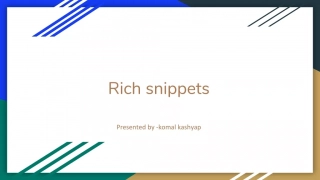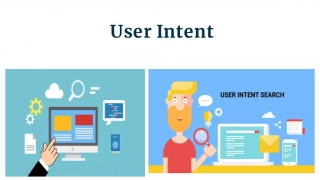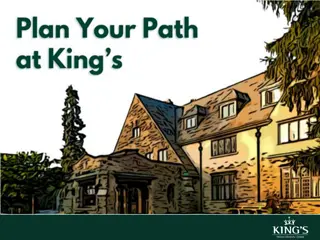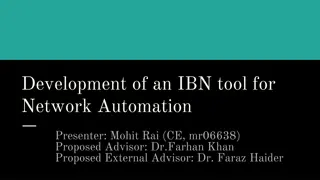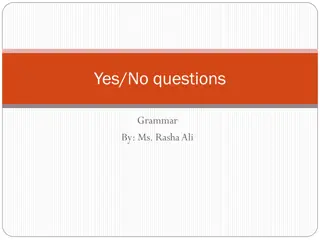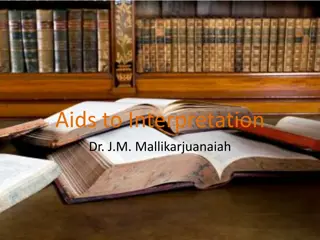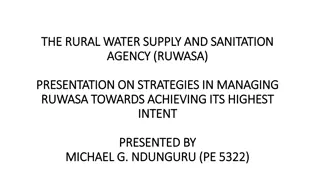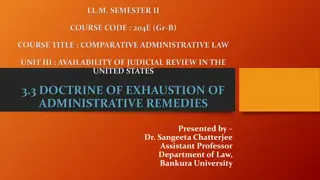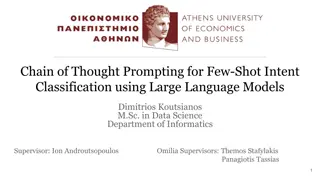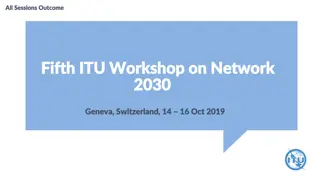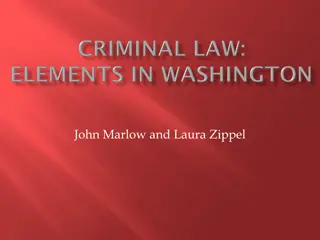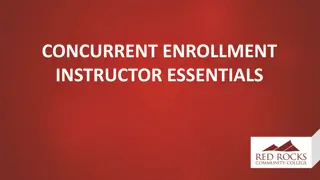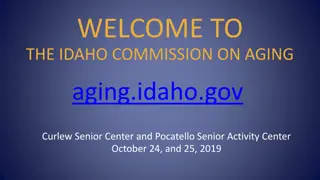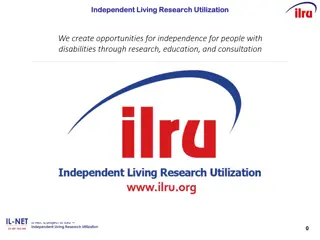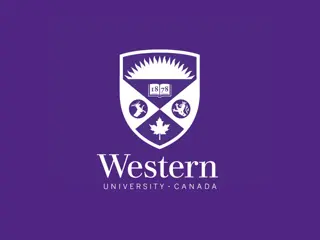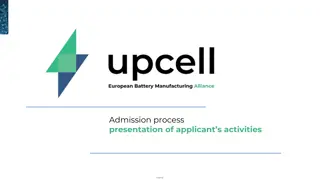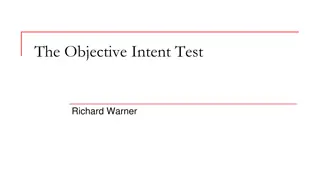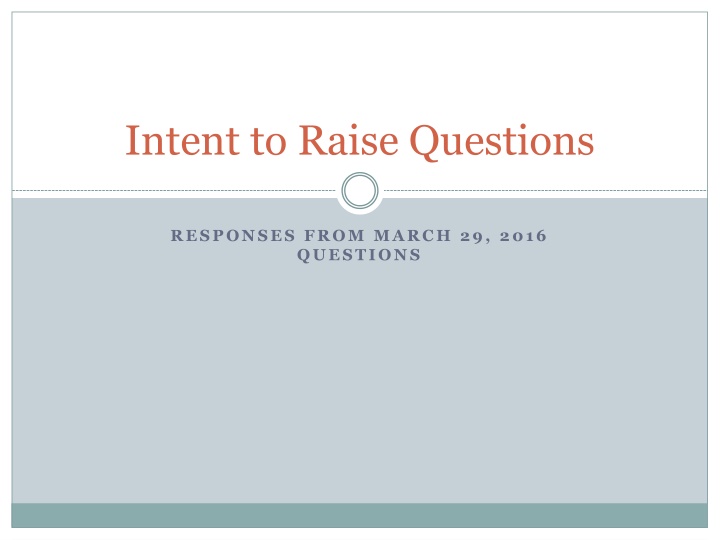
Learning Through Experience Initiative Overview
Discover the details of the Learning Through Experience initiative, including its history, structure, alignment with the university's mission, faculty input, and budget justification. Get insights from Provost G. Hutchinson regarding the initiative's evolution and key components, as well as responses to faculty questions and concerns.
Download Presentation

Please find below an Image/Link to download the presentation.
The content on the website is provided AS IS for your information and personal use only. It may not be sold, licensed, or shared on other websites without obtaining consent from the author. If you encounter any issues during the download, it is possible that the publisher has removed the file from their server.
You are allowed to download the files provided on this website for personal or commercial use, subject to the condition that they are used lawfully. All files are the property of their respective owners.
The content on the website is provided AS IS for your information and personal use only. It may not be sold, licensed, or shared on other websites without obtaining consent from the author.
E N D
Presentation Transcript
Intent to Raise Questions RESPONSES FROM MARCH 29, 2016 QUESTIONS
S. Kelly It has come to my attention that the proposed budget for next year includes $250,000 for an initiative titled Learning Through Experience. This is a large investment that I believe warrants faculty input. I am wondering if the principals behind this initiative could answer some questions. I suggest that the LTE principals present their response at the next meeting of the Senate. 1. 2. What is this initiative? Explain its history and its structure. Where in the university hierarchy will this initiative be housed? Why is that the appropriate location? 3. How does this initiative respond to the mission of the university? 4. Why is this the appropriate means for addressing a student-centered, mission- centered problem? 5. How many faculty were consulted in designing this initiative? 6. Please characterize the response of faculty to this initiative. Did the consulted faculty raise any objections to this initiative? 7. In the current budget environment, why should such a large investment be made when we are not fully funding or mission centers, our student research initiatives, and other mission-centric priorities?
G. Hutchinson, Provost 1. What is this initiative? Explain its history and its structure. Learning through Experience evolved as a responsive model to address the needs of our campus partners, students, and regional communities. While this was developed as a Presidential initiative, we envision this area to serve our CI campus and local communities. Application of learning in real-world contexts is a necessary component for CI to consider as a critical benchmark of workforce readiness and student success. Methods to address the skills gap involve providing high-impact educational practices (e.g., internship programs, student research, and service learning) to foster hands-on learning in the workplace setting. Ultimately, the aim of Learning through Experience is to facilitate mutually beneficial opportunities in the areas of employment, research and community engagement to positively impact our region.
Response to Q1.1 Continued Currently, the structure will facilitate collaboration and support among the areas of community engagement, student research, and employment/internships (career development). Learning through Experience will serve as the primary connection from the community to CI and make direct connections based on the specific needs of our partners. In alignment with the concept of coordinating requests from our region, we envision information flowing to Learning through Experience from employers, agencies, and non-profits regarding their needs related to employment, research, and community engagement. For the first phase, we intend to focus primarily on internships and employment since this is the predominant request we receive from our community partners. Our plan is to build out internships/employment opportunities and expand into other areas including community engagement and student research.
Response to Q1.2 2. initiative be housed? Why is that the appropriate location? Since the initiative involves cross divisional partnerships, the current proposal was presented as a presidential initiative. Determination of the exact location has not been decided at this point in time. Where in the university hierarchy will this
Response to Q1.3 3. How does this initiative respond to the mission of the university? CSU Channel Islands (CI) Learning through Experience (LTE) advances the Mission of the University by providing opportunities for students to engage in real-world experiences that enhance academic learning, strengthen research skills, develop intellectual and professional networks, foster active engagement in the community, and prepare for careers to meet the emerging workforce needs of the region. CSU Channel Islands will be recognized as a prominent public University committed to engaging students in meaningful curricular and co-curricular learning to enhance their educational experiences at CI. Learning through Experience will serve as a bridge from CI to industry, education, government and the military, connecting CI students, faculty, and staff with professionals.
Response to Q1.4 4. Why is this the appropriate means for addressing a student-centered, mission-centered problem? By 2025, the number of jobs requiring workers with college degrees is expected to surpass demand (Public Policy Institute of California, 2009). Our challenge at CI will be to enhance graduation rates and to provide work preparation experiences to create educated and competent candidates for the 21st century workforce. As the leading source of producing the State of California s skilled workforce, the California State University (CSU) system is a key partner for addressing workforce readiness. Specifically, California State University Channel Islands (CI) located in Ventura County is an ideal location for workforce development. The State of California Employment Development Department (EDD) projects that over the next four years this region will need a large and diverse skilled labor pool for new jobs in agriculture, biotechnology, telecommunications, advanced technologies, manufacturing, military testing and development, and P-16 education (Workforce Investment Board, 2013). Investing in our future workforce requires partnerships between industry and education. Learning through Experience at CI will provide a connecting bridge from academia to industry. By facilitating Learning through Experience at CI, we can prepare our future industry and community leaders to serve as engaged citizens in our region.
Response to Q1.5 5. How many faculty were consulted in designing this initiative? We facilitated a focus group meeting with faculty and individuals in the areas of Community Engagement and Student Research Council. Following the on- campus focus group meeting, we presented the proposal to the CI Foundation Board in November 2015. We plan to continue working with faculty to refine Learning through Experience by facilitating an advisory board.
Response to Q1.5 Continued The following individuals were invited to attend the focus group meeting on 11/17 at 8:00 a.m. in the Provost s Conference Room: Hutchinson, Gayle Carpenter, Amanda Remotti, Melissa Sawyer, Greg Carey, Karen Hartung, Beth Cook, Matthew Wyels, Cindy Grier, Jeanne Downey, Dennis J. Pacheco, Pilar Aloisio, Simone Garcia, Tania Gary Cushing (HLI Internship Associate) Jill Leafstead
Response to Q1.5 Continued The following individuals attended the focus group meeting on 11/17 at 8:00 a.m. in the Provost s Conference Room: Hutchinson, Gayle Carpenter, Amanda Remotti, Melissa Sawyer, Greg Hartung, Beth Cook, Matthew Wyels, Cindy Grier, Jeanne Downey, Dennis J. Pacheco, Pilar Garcia, Tania Gary Cushing (HLI Internship Associate) Jill Leafstead
Response to Q1.6 6. Please characterize the response of faculty to this initiative. Did the consulted faculty raise any objections to this initiative? Following the meeting, our faculty colleagues provided us with feedback regarding LTE as follows: 1. Look into the S4 database and how we might collaborate with CCE on using it. 2. Concern about whether the meaning of service learning would be clouded if the CCE or any program initiative joined the LTE. 3. We should think about how we might expand the concept of LTE or narrow its focus in the first phase. 4. The way the concept is presented now may exacerbate the tension between a liberal arts approach to university education or a vocational training approach. 5. The curriculum should be tied directly to the concept as it is articulated now. Curricula sits at the core of the academic institution. 6. A concern that this office would direct or disrupt HIPs and service learning across programs. LTE will serve as a support structure to existing HIPs and service learning. 7. If LTE s purpose is to foster internal and external communication and serve as a clearing house of information it must be connected to the curriculum 8. Other initiatives to consider: education outreach efforts (SOE), graduate research and international internships.
Response to Q1.6 Continued As a result of the focus group feedback, the LTE committee met and decided to: 1. Scale back our focus and create a hub that would focus as point of contact and facilitator of communications from community to faculty and vice versa. 2. Develop a visual model illustrating collaboration. Above LTE would be a funnel, where information from the community would flow in and information from the University would flow out. Later we will add on the bursts/rays with a specific mission center or program initiative like undergraduate research sitting at the end of it. The diagram will be transferred it into a working graphic for future presentations. 3. Once we have the hub, we will phase in the mission centers and program initiatives. 4. Create an advisory board with directors from the mission centers, undergraduate research and other, then assign work groups to build connections needed.
Response to Q1.7 7. In the current budget environment, why should such a large investment be made when we are not fully funding or mission centers, our student research initiatives, and other mission-centric priorities? This program is not prioritized above any other university program, service or activity.
G. Wood In J. Gormley s reply, he states we have adequate faculty office space. How many faculty offices do we have? How many faculty (full and part time) do we employ?
D. Wakelee, Associate Provost Donna Vea in Faculty Affairs reports that, for Spring 2016, CI has 122 tenure-track faculty, 82 full-time lecturers, and 213 part-time lecturers. There are also 22 teaching assistants; There are currently 197 offices used by faculty (in both individual and shared configurations). For 2016 2017 an additional 14 offices (with 23 stations) have been identified for potential use by faculty.


